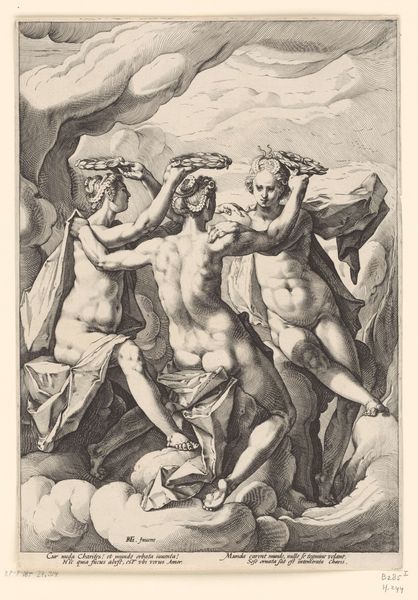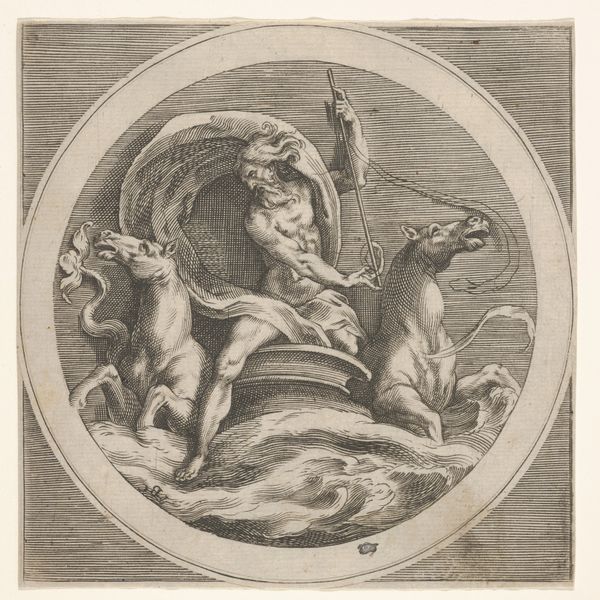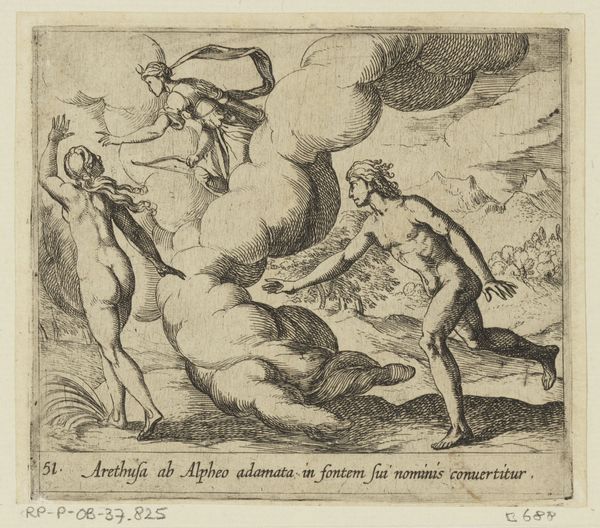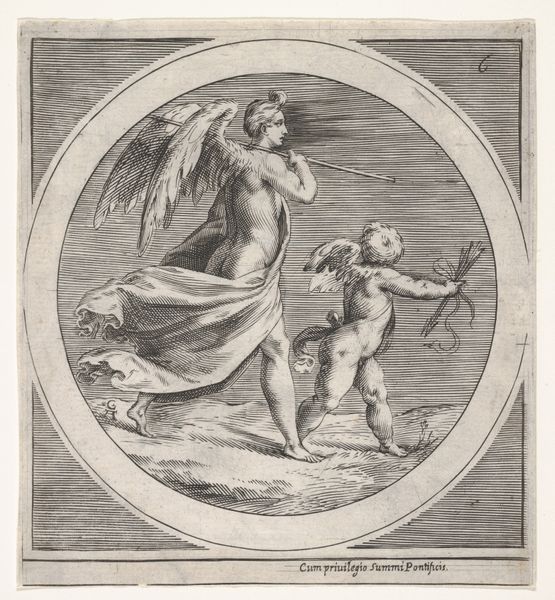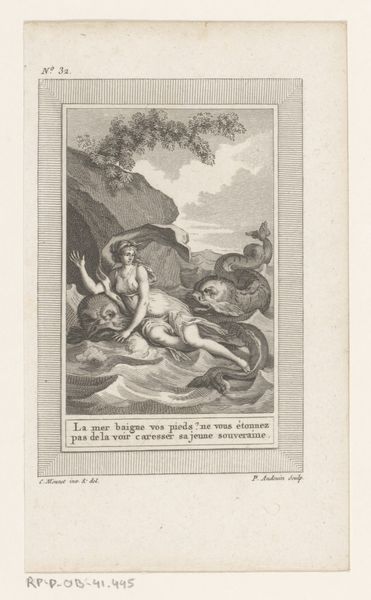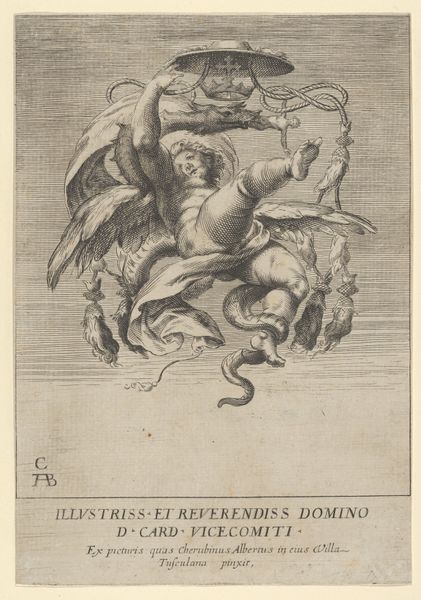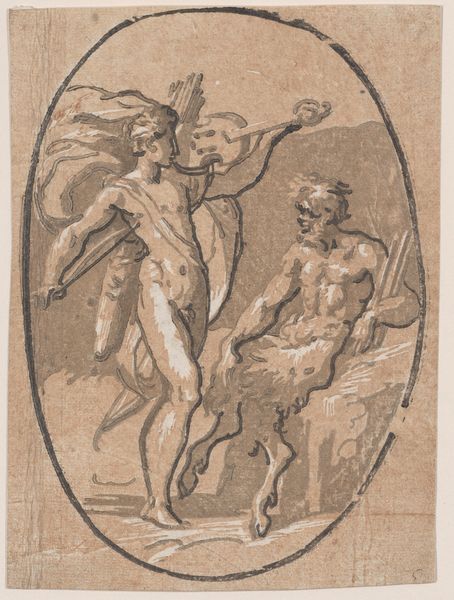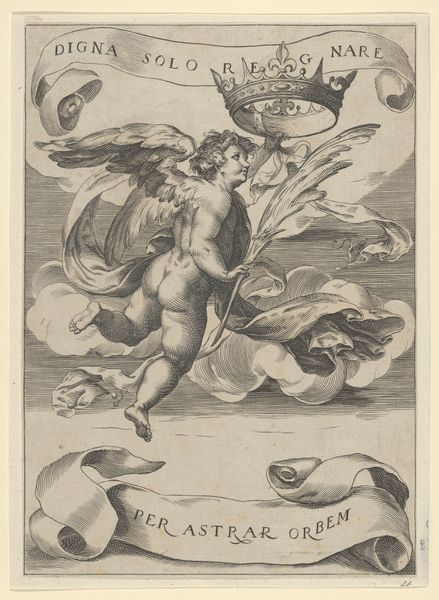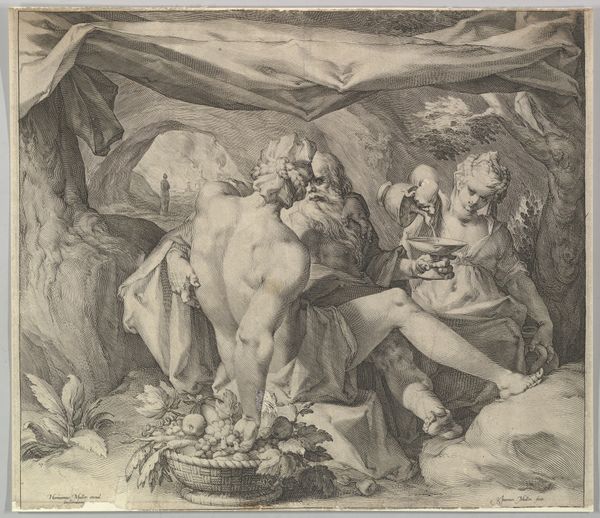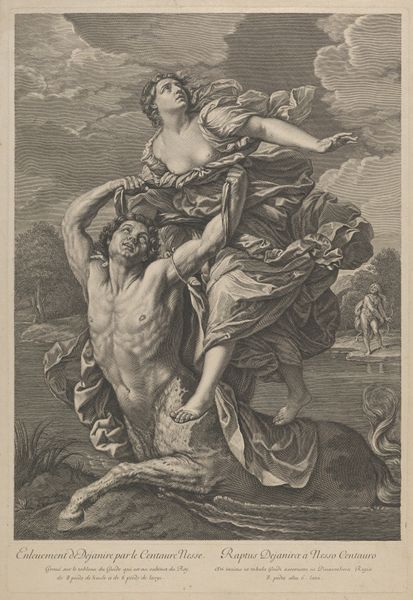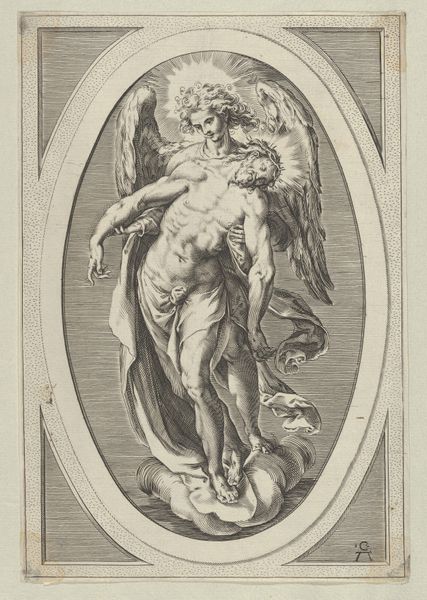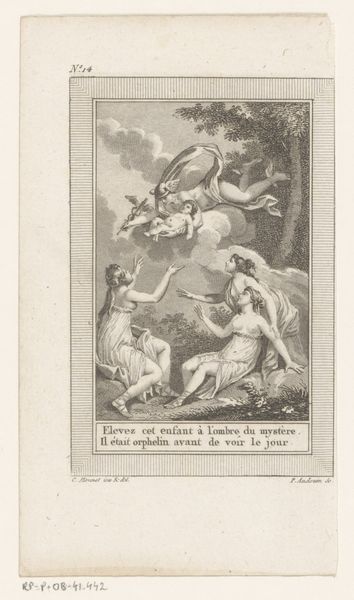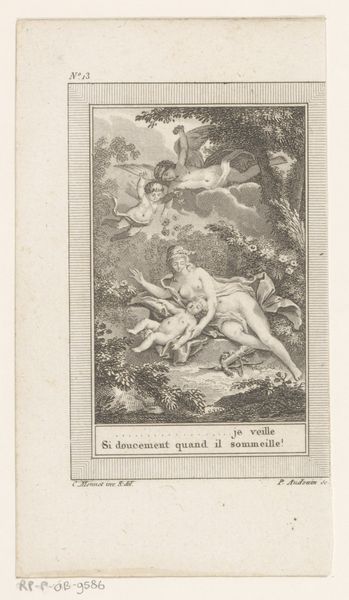
Apollo pursuing Daphne, whose toes take the form of tree roots, a round composition, reverse copy after a series of engravings by Cherubino Alberti of mythological scenes after Polidoro da Caravaggio 1550 - 1600
0:00
0:00
drawing, print, engraving
#
drawing
# print
#
mannerism
#
figuration
#
history-painting
#
italian-renaissance
#
nude
#
engraving
Dimensions: sheet: 6 5/16 x 5 9/16 in. (16 x 14.2 cm)
Copyright: Public Domain
Editor: Here we have a print from the late 16th century, sometime between 1550 and 1600, depicting Apollo pursuing Daphne. It's after Polidoro da Caravaggio. I’m struck by how the circular composition seems to trap them in this endless chase. What catches your eye about this piece? Curator: The medium itself speaks volumes. This isn't just about Apollo and Daphne; it's about the *making* of art. Consider the labor involved in creating this engraving, a "reverse copy" as it's described. Think of the artisan meticulously translating another artist's vision, likely within a workshop setting, reproducing images for wider consumption. Editor: So it's less about the original artist's intent and more about…production? Curator: Precisely! The print becomes a commodity. Ask yourself: Who was buying these? What function did these prints serve in society? They weren’t solitary masterpieces. They might have been used as models for other artworks or for teaching purposes, diffusing classical imagery. This shifts our focus from the romantic ideal of the solitary artist to the broader system of artistic production and distribution. Editor: It's like a Renaissance meme – a widely distributed image, infinitely reproducible! Curator: Indeed! And that reproducibility has implications. This image isn't fixed; it’s mutable, adapted and consumed in countless contexts. Consider also the materials. Copperplate engraving allowed for relatively large editions. We see the hand of the engraver, their skill in rendering form and texture. These choices highlight the intersection of artistic skill and economic forces shaping Renaissance art. Editor: So looking at the material tells us about more than just the image. It opens a whole view of labor and access at that time. That's really fascinating; it shifts how I appreciate the work entirely. Curator: Exactly. Seeing art this way helps us consider the wider cultural systems at play, challenging our assumptions about artistic creation.
Comments
No comments
Be the first to comment and join the conversation on the ultimate creative platform.
